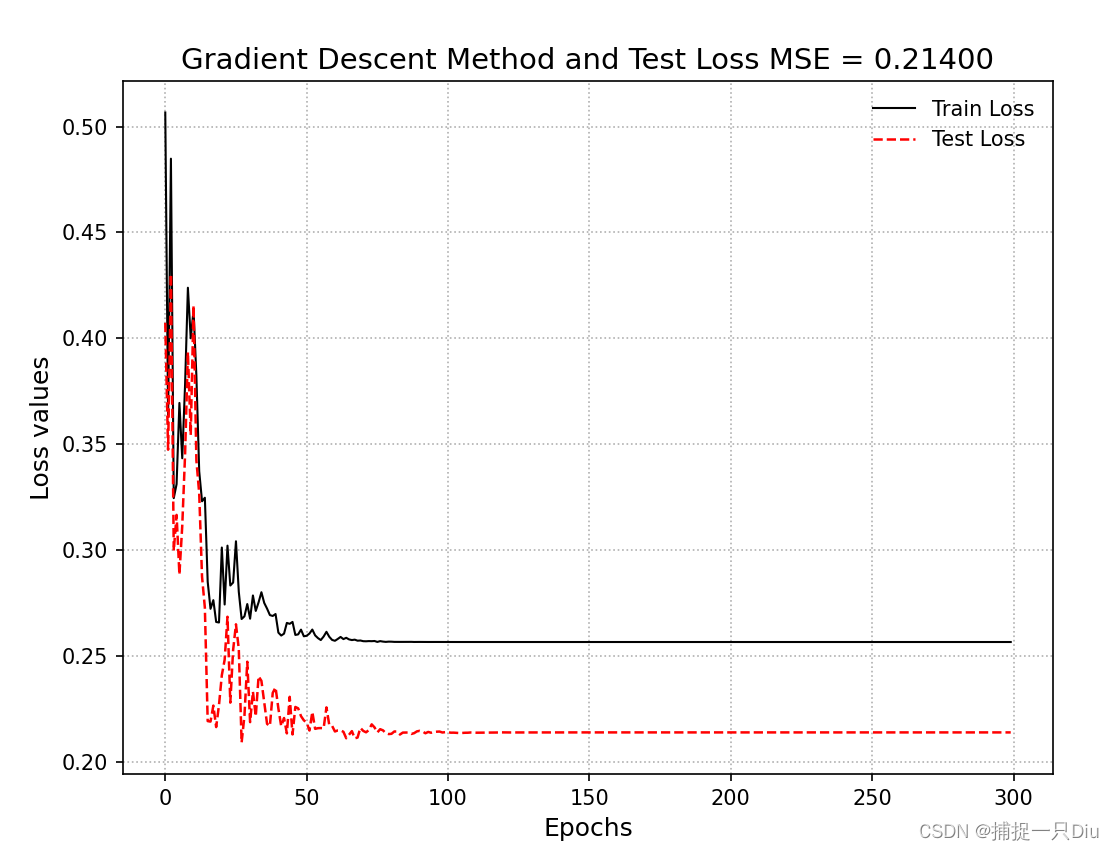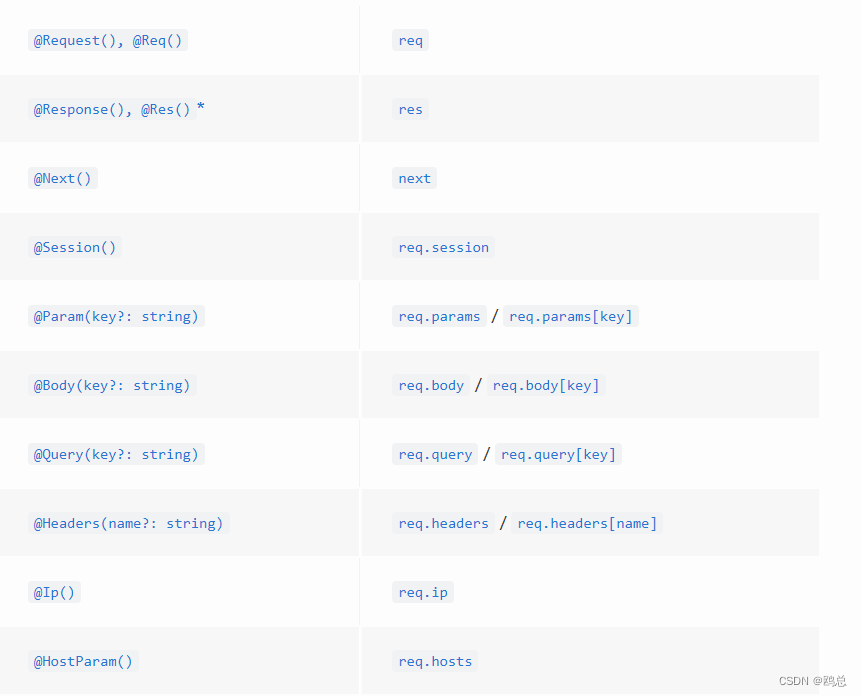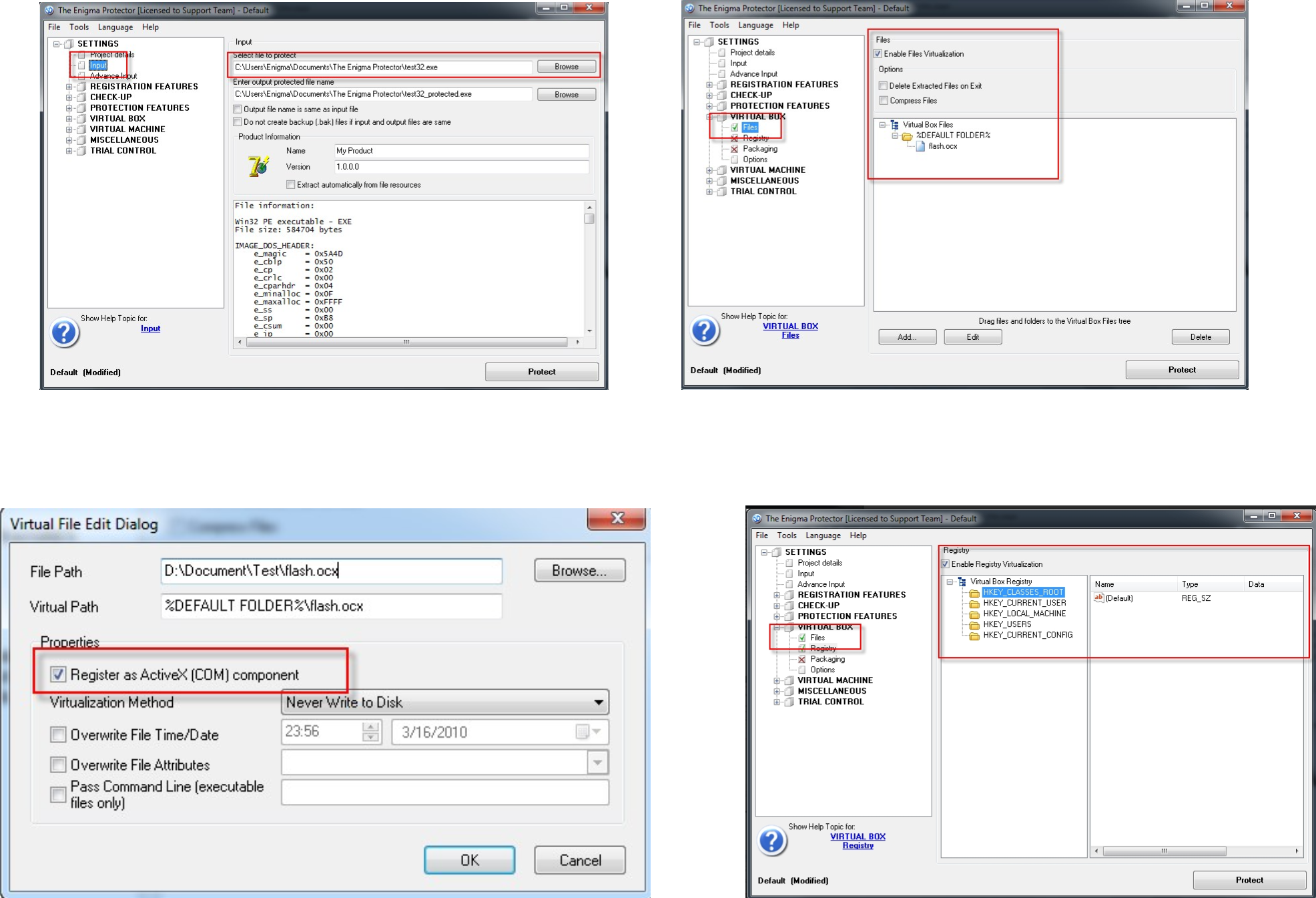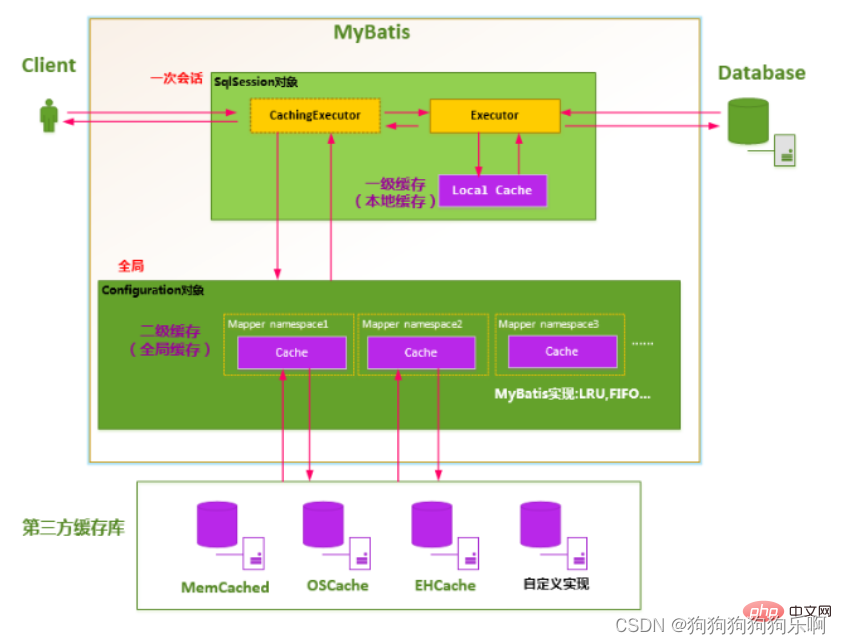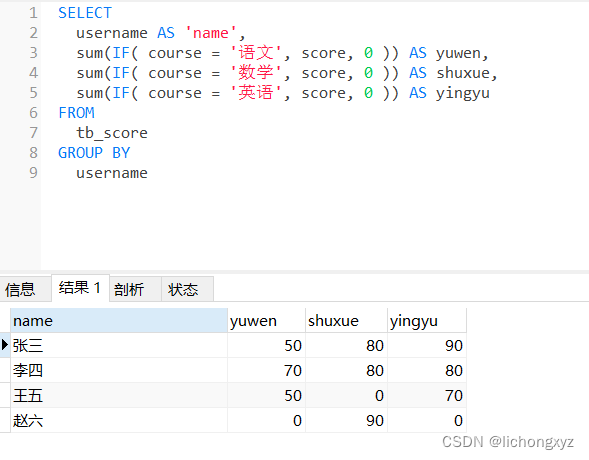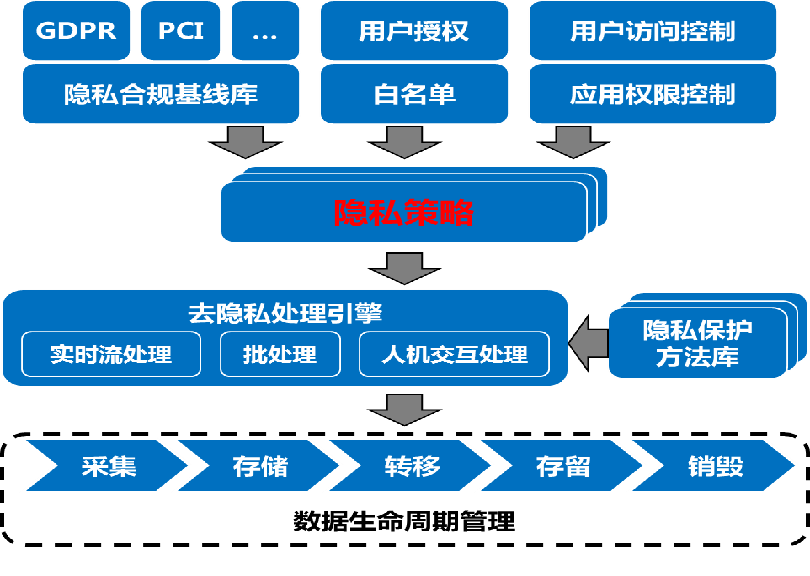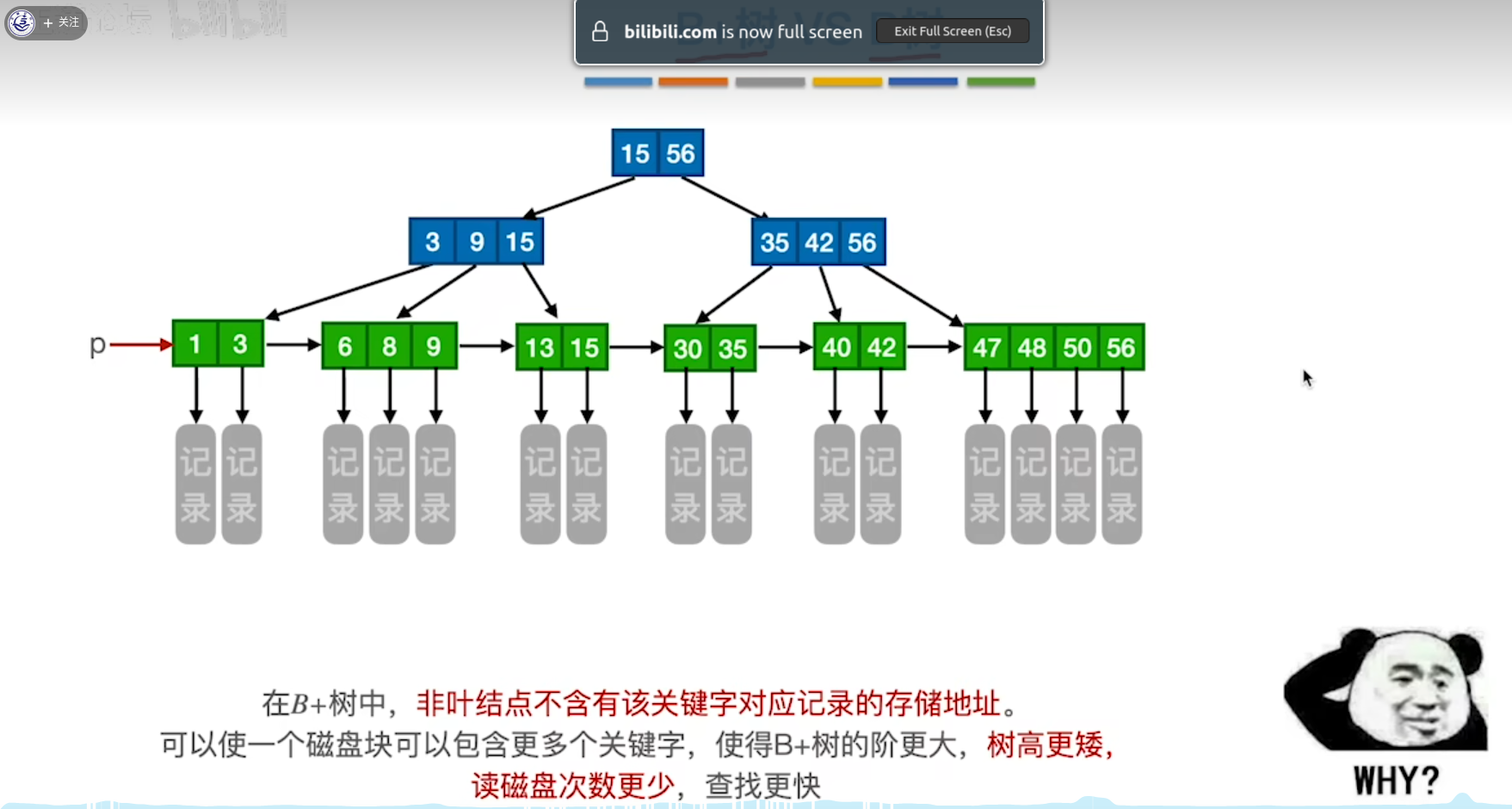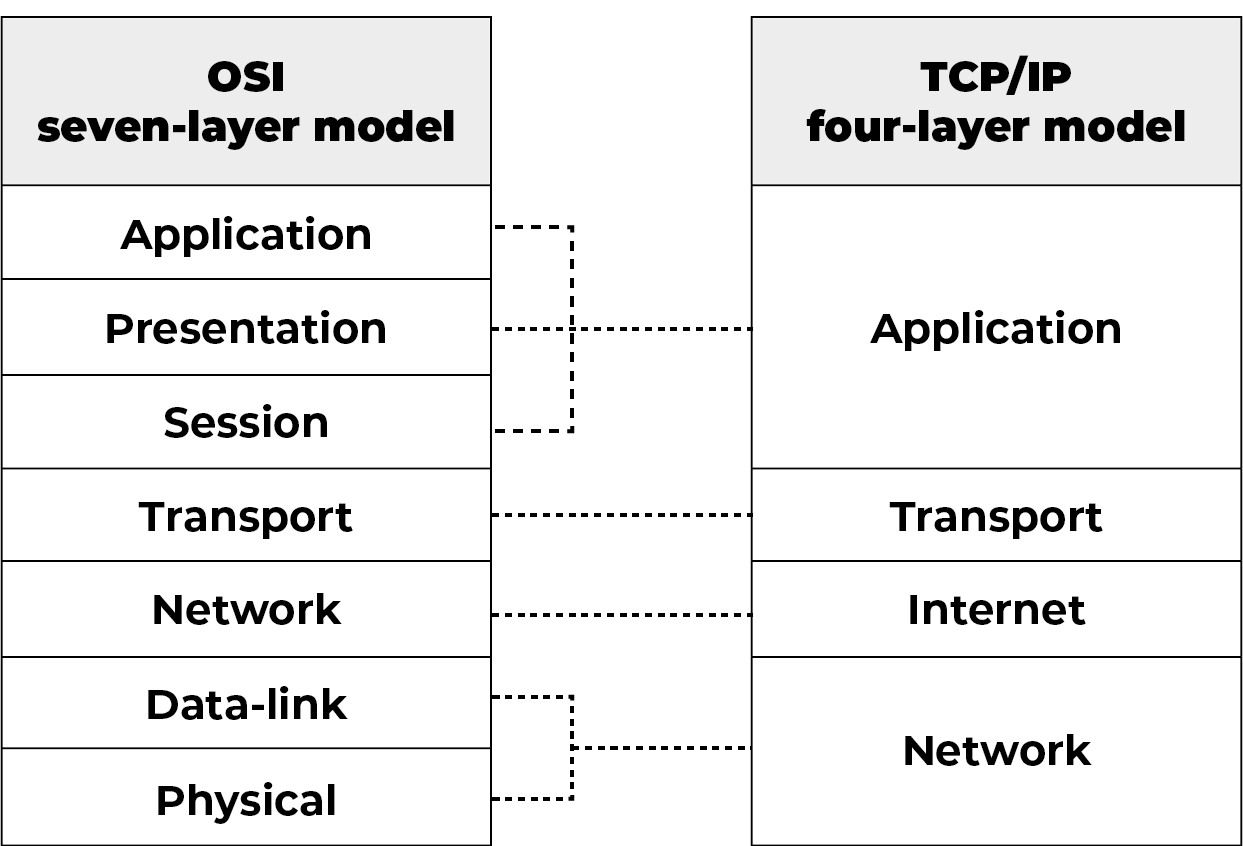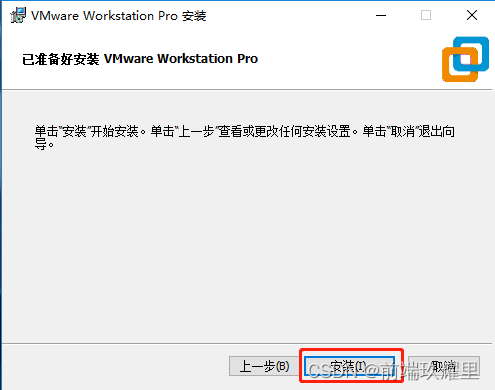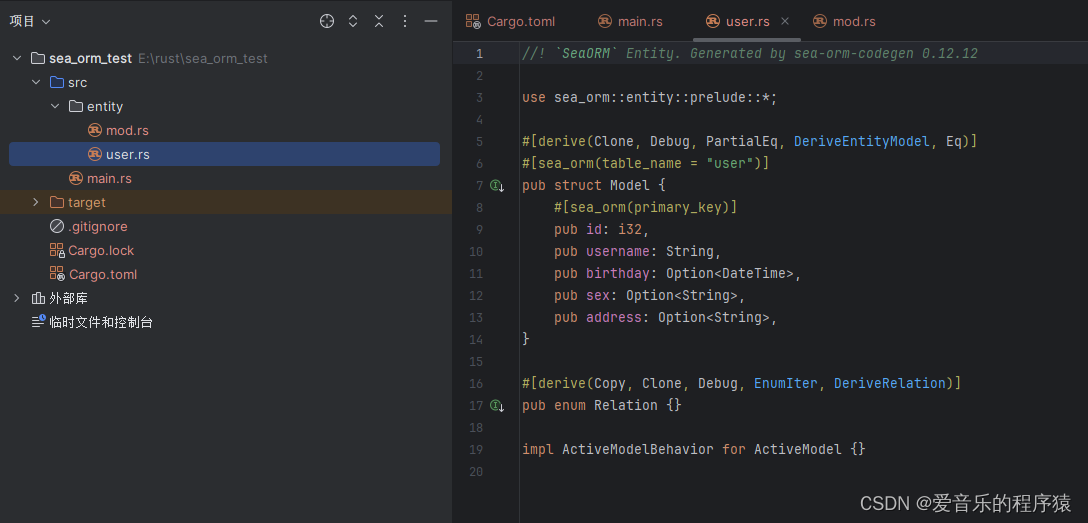LinearRegression_GD.py
import numpy as np
import matplotlib.pyplot as plt
class LinearRegression_GradDesc:
"""
线性回归,梯度下降法求解模型系数
1、数据的预处理:是否训练偏置项fit_intercept(默认True),是否标准化normalized(默认True)
2、模型的训练:闭式解公式,fit(self, x_train, y_train)
3、模型的预测,predict(self, x_test)
4、均方误差,判决系数
5、模型预测可视化
"""
def __init__(self, fit_intercept=True, normalize=True, alpha=0.05, max_epochs=300, batch_size=20):
"""
:param fit_intercept: 是否训练偏置项
:param normalize: 是否标准化
:param alpha: 学习率
:param max_epochs: 最大迭代次数
:param batch_size: 批量大小,若为1,则为随机梯度,若为训练集样本量,则为批量梯度,否则为小批量梯度
"""
self.fit_intercept = fit_intercept # 线性模型的常数项。也即偏置bias,模型中的theta0
self.normalize = normalize # 是否标准化数据
self.alpha = alpha # 学习率
self.max_epochs = max_epochs
self.batch_size = batch_size
self.theta = None # 训练权重系数
if normalize:
self.feature_mean, self.feature_std = None, None # 特征的均值,标准方差
self.mse = np.infty # 训练样本的均方误差
self.r2, self.r2_adj = 0.0, 0.0 # 判定系数和修正判定系数
self.n_samples, self.n_features = 0, 0 # 样本量和特征数
self.train_loss, self.test_loss = [], [] # 存储训练过程中的训练损失和测试损失
def init_params(self, n_features):
"""
初始化参数
如果训练偏置项,也包含了bias的初始化
:return:
"""
self.theta = np.random.randn(n_features, 1) * 0.1
def fit(self, x_train, y_train, x_test=None, y_test=None):
"""
模型训练,根据是否标准化与是否拟合偏置项分类讨论
:param x_train: 训练样本集
:param y_train: 训练目标集
:param x_test: 测试样本集
:param y_test: 测试目标集
:return:
"""
if self.normalize:
self.feature_mean = np.mean(x_train, axis=0) # 样本均值
self.feature_std = np.std(x_train, axis=0) + 1e-8 # 样本方差
x_train = (x_train - self.feature_mean) / self.feature_std # 标准化
if x_test is not None:
x_test = (x_test - self.feature_mean) / self.feature_std # 标准化
if self.fit_intercept:
x_train = np.c_[x_train, np.ones_like(y_train)] # 添加一列1,即偏置项样本
if x_test is not None and y_test is not None:
x_test = np.c_[x_test, np.ones_like(y_test)] # 添加一列1,即偏置项样本
self.init_params(x_train.shape[1]) # 初始化参数
self._fit_gradient_desc(x_train, y_train, x_test, y_test) # 梯度下降法训练模型
def _fit_gradient_desc(self, x_train, y_train, x_test=None, y_test=None):
"""
三种梯度下降求解:
(1)如果batch_size为1,则为随机梯度下降法
(2)如果batch_size为样本量,则为批量梯度下降法
(3)如果batch_size小于样本量,则为小批量梯度下降法
:return:
"""
train_sample = np.c_[x_train, y_train] # 组合训练集和目标集,以便随机打乱样本
# np.c_水平方向连接数组,np.r_竖直方向连接数组
# 按batch_size更新theta,三种梯度下降法取决于batch_size的大小
best_theta, best_mse = None, np.infty # 最佳训练权重与验证均方误差
for i in range(self.max_epochs):
self.alpha *= 0.95
np.random.shuffle(train_sample) # 打乱样本顺序,模拟随机化
batch_nums = train_sample.shape[0] // self.batch_size # 批次
for idx in range(batch_nums):
# 取小批量样本,可以是随机梯度(1),批量梯度(n)或者是小批量梯度(<n)
batch_xy = train_sample[self.batch_size * idx: self.batch_size * (idx + 1)]
# 分取训练样本和目标样本,并保持维度
batch_x, batch_y = batch_xy[:, :-1], batch_xy[:, -1:]
# 计算权重更新增量
delta = batch_x.T.dot(batch_x.dot(self.theta) - batch_y) / self.batch_size
self.theta = self.theta - self.alpha * delta
train_mse = ((x_train.dot(self.theta) - y_train.reshape(-1, 1)) ** 2).mean()
self.train_loss.append(train_mse)
if x_test is not None and y_test is not None:
test_mse = ((x_test.dot(self.theta) - y_test.reshape(-1, 1)) ** 2).mean()
self.test_loss.append(test_mse)
def get_params(self):
"""
返回线性模型训练的系数
:return:
"""
if self.fit_intercept: # 存在偏置项
weight, bias = self.theta[:-1], self.theta[-1]
else:
weight, bias = self.theta, np.array([0])
if self.normalize: # 标准化后的系数
weight = weight / self.feature_std.reshape(-1, 1) # 还原模型系数
bias = bias - weight.T.dot(self.feature_mean)
return weight.reshape(-1), bias
def predict(self, x_test):
"""
测试数据预测
:param x_test: 待预测样本集,不包括偏置项
:return:
"""
try:
self.n_samples, self.n_features = x_test.shape[0], x_test.shape[1]
except IndexError:
self.n_samples, self.n_features = x_test.shape[0], 1 # 测试样本数和特征数
if self.normalize:
x_test = (x_test - self.feature_mean) / self.feature_std # 测试数据标准化
if self.fit_intercept:
# 存在偏置项,加一列1
x_test = np.c_[x_test, np.ones(shape=x_test.shape[0])]
y_pred = x_test.dot(self.theta).reshape(-1, 1)
return y_pred
def cal_mse_r2(self, y_test, y_pred):
"""
计算均方误差,计算拟合优度的判定系数R方和修正判定系数
:param y_pred: 模型预测目标真值
:param y_test: 测试目标真值
:return:
"""
self.mse = ((y_test.reshape(-1, 1) - y_pred.reshape(-1, 1)) ** 2).mean() # 均方误差
# 计算测试样本的判定系数和修正判定系数
self.r2 = 1 - ((y_test.reshape(-1, 1) - y_pred.reshape(-1, 1)) ** 2).sum() / \
((y_test.reshape(-1, 1) - y_test.mean()) ** 2).sum()
self.r2_adj = 1 - (1 - self.r2) * (self.n_samples - 1) / \
(self.n_samples - self.n_features - 1)
return self.mse, self.r2, self.r2_adj
def plt_predict(self, y_test, y_pred, is_show=True, is_sort=True):
"""
绘制预测值与真实值对比图
:return:
"""
if self.mse is np.infty:
self.cal_mse_r2(y_pred, y_test)
if is_show:
plt.figure(figsize=(8, 6))
if is_sort:
idx = np.argsort(y_test) # 升序排列,获得排序后的索引
plt.plot(y_test[idx], "k--", lw=1.5, label="Test True Val")
plt.plot(y_pred[idx], "r:", lw=1.8, label="Predictive Val")
else:
plt.plot(y_test, "ko-", lw=1.5, label="Test True Val")
plt.plot(y_pred, "r*-", lw=1.8, label="Predictive Val")
plt.xlabel("Test sample observation serial number", fontdict={"fontsize": 12})
plt.ylabel("Predicted sample value", fontdict={"fontsize": 12})
plt.title("The predictive values of test samples \n MSE = %.5e, R2 = %.5f, R2_adj = %.5f"
% (self.mse, self.r2, self.r2_adj), fontdict={"fontsize": 14})
plt.legend(frameon=False)
plt.grid(ls=":")
if is_show:
plt.show()
def plt_loss_curve(self, is_show=True):
"""
可视化均方损失下降曲线
:param is_show: 是否可视化
:return:
"""
if is_show:
plt.figure(figsize=(8, 6))
plt.plot(self.train_loss, "k-", lw=1, label="Train Loss")
if self.test_loss:
plt.plot(self.test_loss, "r--", lw=1.2, label="Test Loss")
plt.xlabel("Epochs", fontdict={"fontsize": 12})
plt.ylabel("Loss values", fontdict={"fontsize": 12})
plt.title("Gradient Descent Method and Test Loss MSE = %.5f"
% (self.test_loss[-1]), fontdict={"fontsize": 14})
plt.legend(frameon=False)
plt.grid(ls=":")
# plt.axis([0, 300, 20, 30])
if is_show:
plt.show()
test_linear_regression_gd.py
import numpy as np
from LinearRegression_GD import LinearRegression_GradDesc
from sklearn.model_selection import train_test_split
np.random.seed(42)
X = np.random.rand(1000, 6) # 随机样本值,6个特征
coeff = np.array([4.2, -2.5, 7.8, 3.7, -2.9, 1.87]) # 模型参数
y = coeff.dot(X.T) + 0.5 * np.random.randn(1000) # 目标函数值
X_train, X_test, y_train, y_test = train_test_split(X, y, test_size=0.3, random_state=0, shuffle=True)
lr_gd = LinearRegression_GradDesc(alpha=0.1, batch_size=1)
lr_gd.fit(X_train, y_train, X_test, y_test)
theta = lr_gd.get_params()
print(theta)
y_test_pred = lr_gd.predict(X_test)
lr_gd.plt_predict(y_test, y_test_pred)
lr_gd.plt_loss_curve()

